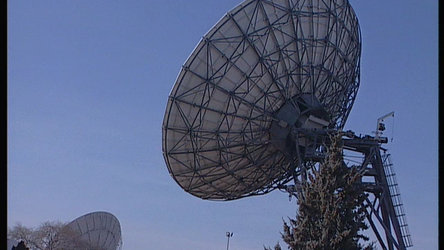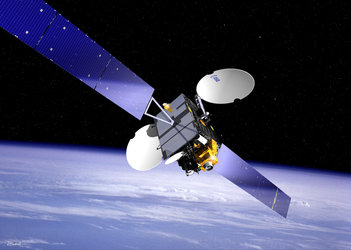
Artemis: Mission Impossible, Mission Accomplished
On 12 July 2001, the Artemis telecommunications satellite was left stranded in a wrong orbit following a malfunction of its launcher. Thanks to Artemis' advanced ion propulsion engine and solar power, it was gradually pushed towards its nominal orbital altitude of 36000 km above the equator which it reached on 31 January 2003. Artemis will soon be put into use, for example for transmitting images from Envisat in real time to the data processing facilities. This ESA TV Exchange programme tells the story of this success.
The programme comprises of a 7 minute A-Roll with split audio and is complimented by a B-Roll with clean international sound.
A-Roll Script
00:04 At last for the Artemis team: a big smile! The satellite has just arrived at its working position in space, wher it should have been 18 months ago, right after its launch!
00:56 In July 2001 Artemis - ESA's most advanced telecommunications satellite ever commissioned - was left in a lower than intended orbit, when the Ariane 5 upper stage malfunctioned. It was feared at that time that this Advanced Relay and Technology MIssion might be lost. Since then a European team have managed to recover the satellite. The task proved to be quite difficult and paved with surprises.
01:56 It is here in Fucino, Italy the world largest ground station, that Artemis is monitored and controlled. Shorly after launch, the satellite was put into a safe parking orbit using the classic apogee engine. It went from an altituted of 17 000 kilometres to 31 000. The it was time for serious brainstorming and creative thinking, often under severe time pressure, by engineers and spcialists form the European Spa






